Dishwasher leaks come from several sources. By removing the bottom inspection covers and watching, most leaks can be diagnosed. They fall into several catagories:
1. Pump leaks. Many times the pump seal fails and begins to leak. Water often gets into the motor bearings and makes noise. This is true of all models.
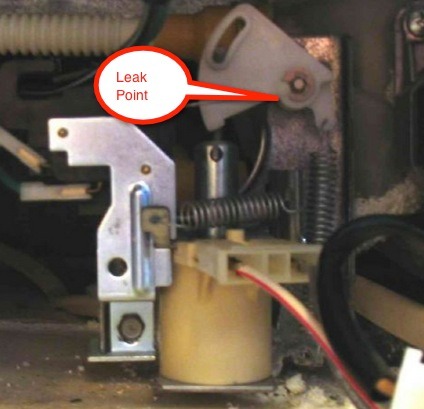
GE Pump Solenoid Leaking
2. Hose and connection leaks may be caused by dry rot, vibration or mouse chewing damage. (Mice chew where the drain hose feeds from one cabinet to the next.) Often they are easily found but sometimes the unit must be pulled from the cabinet to discover the source. Some pump lines go along the outside and top of the outer tub. Some models have through the wall screws mounting the rack rollers. These mounting holes can also develop leaks.
3. Door leaks often occur. These are usually misdiagnosed as bad door seals instead of spray arm issues. The lower door seal acts like a shower curtain, not a tight seal. Any water spashing hard against it will leak out. A problem with the spray tower and arm will often result in a door leak and a new door seal will not fix it!! Fix the spray system first.
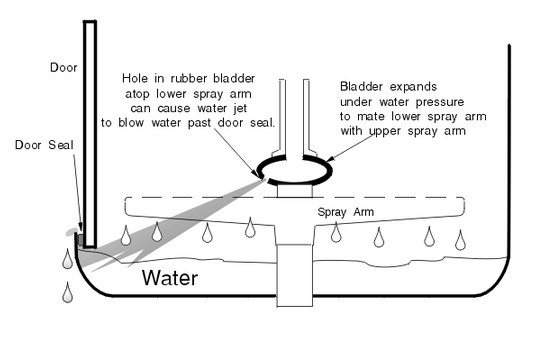
Bad Spray Arm Causing Door Leak
4. Door seals do occasionally fail but be very careful. Check the latch mechanism and whether the door hinge is sprung before replacing the seal. A bad seal must be visibly damaged before it needs replacement. Dry the seal and door and run the unit looking for wetness along the jam. Some units can be run with the outer skin off, holding the inner panel in place with your hand, while looking for a leak around the edge.
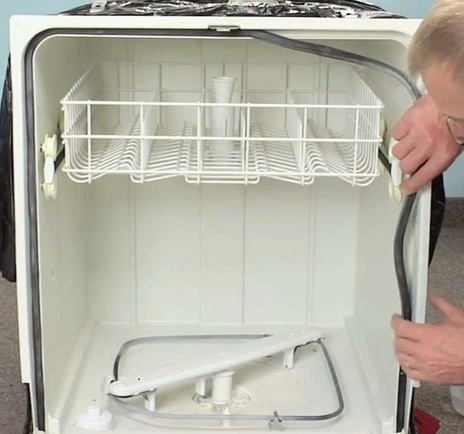
Replacing a Door Seal
5. Inlet air gaps and inlet water hoses may leak during the fill cycle. Water will appear to be coming from above and dripping down the side of the unit.
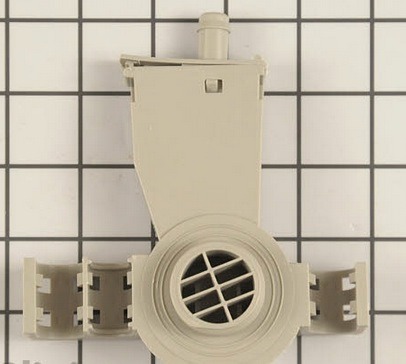
Inlet Housing
6. A sink air gap leak is not really a dishwasher issue but may result is a service call anyway. Clean the airgap or the disposer inlet line to correct the problem.

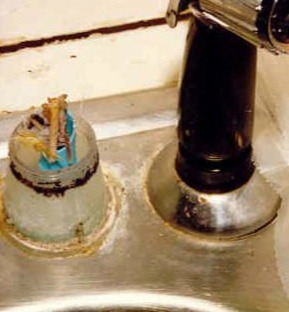
Debris Clogging Air Gap
Standing Water in The Dishwasher
Standing water is different from "Won't Drain". It is usually clear water, not dirty wash water. Plus it will appear magically overnight. This has two causes:
1. The inlet water valve is seeping and slowly filling up the dishwasher. Diagnosis of this situation is precisely the same as on a washing machine. Careful inspection of the fill line (inlet) may reveal a slow drip running down the inside of the dishwasher.
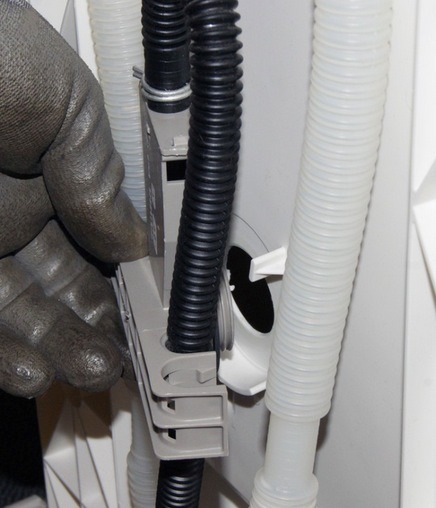
Inlet System
2. Much more common is back flow from the sink. The drain line to the disposer must have a high loop or an air gap to prevent sink drain water from flowing backward into the dishwasher.
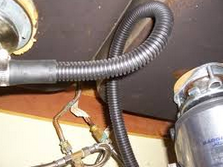
Proper Drain Loop

Low Drain, Improper Installation